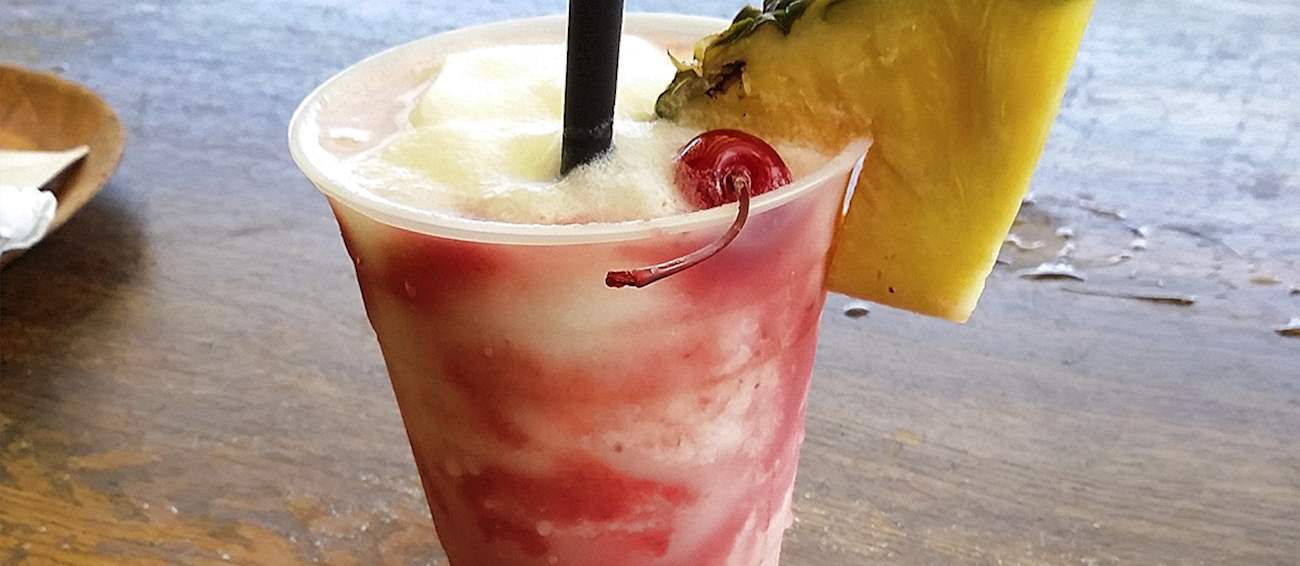Best Cocktail Types in the World
MAIN INGREDIENTS
Coquito is a traditional cocktail similar to eggnog. It is typically prepared and consumed during the festive Christmas season. The cocktail is made with a combination of coconut milk, rum, condensed milk, and vanilla, although every family has their own variation.
In order to prepare it, all ingredients should be blended, then chilled and served in small glasses. It is recommended to garnish coquito with nutmeg on top. The name of this drink means little coconut. In Cuba, they serve it with scoops of coconut ice cream, while the Spanish people serve it with turron.
MAIN INGREDIENTS
Sugary, refreshing, and herbaceous, Mojito is a traditional cocktail based on rum as the key ingredient. It has a relatively low alcohol content (about 10%). Although Havana is considered its birthplace, the origin of this simple cocktail is still disputed.
The original Cuban cocktail recipe includes white rum, sugar, lime juice, soda water, and spearmint yerba buena that grows on the island, but almost every mint variety can be used in the mix if yerba buena is not available. The components of the cocktail are added in a particular order: sugar and lime juice are gently mashed before mint and rum are added to the combination; the cocktail is then briefly stirred and topped with ice and sparkling soda water.
VARIATIONS OF Mojito
It is not Christmas in Chile without a glass of Cola de Mono (lit. Monkey’s Tail). There are numerous versions of this beverage, but it typically consists of milk, sugar, coffee, cloves, cinnamon, and aguardiente – distilled spirits containing between 29% and 60% alcohol by volume.
Brandy or rum are among the most common types of alcohol used in Cola de Mono. All ingredients are first boiled, cooled, then combined with aguardiente. The drink can be served hot or cold, and it is traditionally paired with a slice of pan de pascua, a traditional Christmas bread.
MAIN INGREDIENTS
Chilcano is a Peruvian cocktail made with a combination of pisco, lime juice, and ginger ale. The simple cocktail is prepared by combining the ingredients in a highball glass over ice, then stirring the combination. If desired, the cocktail can be additionally enriched by adding a few drops of bitters and it is recommended to garnish it with a lime twist.
Regarding the origins of this refreshing cocktail, it is believed that the drink started to be called chilcano, which is the name of a local fish head soup, because both the drink and the soup were great hangover cures.
A Brazilian national cocktail called Caipirinha is made with cachaça, sugar, and lime. Cachaça is the most common distilled alcoholic drink in Brazil, and it can be consumed by itself or used as a base for a number of mixed beverages.
This refreshing cocktail is simple to prepare: sugar and lime that has been cut into quarters should be gently muddled together with a wooden spoon before adding cachaça and ice. The traditional way to make Caipirinha is in a single large jar that can be shared amongst people, but it can also be served in an old-fashioned glass with a lime wedge garnish.
MAIN INGREDIENTS
Pisco Sour is a Peruvian cocktail made with a combination of Pisco brandy, lime juice, sugar syrup, and egg whites. The ingredients are shaken with ice and then strained into an old-fashioned glass. The cocktail is traditionally garnished with Amargo Chancho bitters, but Angostura bitters are widely used today.
The first Pisco Sour was made in the early 1920s in Lima by an American bartender Victor Vaughn Morris. Today, there is still an ongoing debate about Pisco Sour’s origin, with Peru and Chile both claiming that their nation is the home of the first Pisco.
MAIN INGREDIENTS
Rum Punch is a classic Caribbean cocktail made with rum, fruit juice, sugar syrup, and water. To prepare it, all you need to do is remember this Caribbean saying: “One of sour, two of sweet, three of strong, and four of weak.” A shot of fruit juice, two shots of sugar syrup, three shots of rum, and four shots of water are combined in a big glass or a jug, then poured into a glass over ice.
It is recommended to add a few drops of bitters or some freshly grated nutmeg to elevate the flavors even further. Garnish it with a pineapple wedge for the best possible experience.
MAIN INGREDIENTS
Vampiro is a Mexican cocktail that's usuall made with a combination of tequila, tomato juice, orange juice, lime juice, salt, pepper, hot chili peppers or hot pepper sauce, and grenadine syrup. In order to prepare it, all ingredients should be shaken with ice, then strained into an ice-filled glass with a salted rim.
However, as there are numerous variations on the cocktail, it is often made without grenadine, or with pomegranate juice replacing the tomato juice. The name Vampiro (lit. vampire) is a reference to the cocktail’s color, which is reminiscent of blood.
MAIN INGREDIENTS
Szarlotka (or Tatanka) is a Polish cocktail that combines apple juice and Żubrówka, popular Polish vodka flavored with bison grass. The ratio is 2:1 in favor of apple juice. To assemble it, a shot of vodka is poured into a glass filled with ice, and apple juice is added next.
The drink is usually served in a highball glass. It can be made with clear or cloudy apple juice, while the variations sometimes include lemon or lime juice. Also, it can be dusted with cinnamon.
Szarlotka is a Polish term for an apple cake.
MAIN INGREDIENTS
A simple highball cocktail made with gin and tonic water poured over ice, then garnished with a lime wheel is called Gin and Tonic. In the early 19th century, the cocktail was introduced to India by British officers. Malaria was a persistent problem in India, so the officers used the cocktail to prevent and treat the disease with the tonic's quinine.
Due to its bitterness and sour notes, this cocktail is hugely popular worldwide, especially during the summer months. One can experiment with ratios of the components, even though suggested ratios of gin to tonic water range between 1:1 and 1:3. In some countries, it is commonly referred to as Gin Tonic, while people in English-speaking countries often simply call it G & T.
TasteAtlas food rankings are based on the ratings of the TasteAtlas audience, with a series of mechanisms that recognize real users and that ignore bot, nationalist or local patriotic ratings, and give additional value to the ratings of users that the system recognizes as knowledgeable. For the “Top 100 Cocktails in the World” list until February 14, 2025, 7,665 ratings were recorded, of which 6,141 were recognized by the system as legitimate. TasteAtlas Rankings should not be seen as the final global conclusion about food. Their purpose is to promote excellent local foods, instill pride in traditional dishes, and arouse curiosity about dishes you haven’t tried.




























































































































